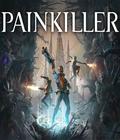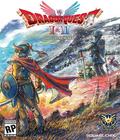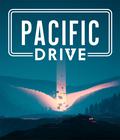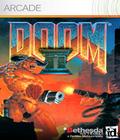When it comes to first-person shooters, Doom II is decidedly old-school. First released more than 15 years ago, Doom II was both a stunning critical and financial success for id Software. Doom may have been the game that put id on the map, but Doom II really solidified the company's reputation. Released and re-released on countless platforms over the years, Doom II has finally hit XBLA, and it's offering up a bit more than simple nostalgia. It's sporting a brand-new expansion pack.
Compared to the likes of modern-day FPS titles, such as Modern Warfare 2, Doom II isn't going to turn any heads. Visually, the game is dated, featuring 2-D sprites and straightforward pixel art. The world you explore gives the illusion of 3-D, but height in Doom II is faked. There is no ability to look up or down, so aiming your weapon consists of nothing more than moving left to right to line up a shot. There's no jump button (id didn't implement that until Quake), and the fanciest footwork you're likely to perform is the circle strafe. In short, if you're in your teens (or younger), chances are good that you'd probably write off this one with a glance and a shrug. To do so, however, would be a mistake.
Despite all of its relative technical limitations, Doom II doesn't suffer. This is a title that holds up well over time and excels in spite of its limitations. Rather than feeling like a stripped-down version of a modern FPS, Doom II manages to highlight the very essence of the genre. In many ways, this is FPS gaming in its purest, as opposed to most basic, form.
Weapon-wise, the Doom franchise helped established the weapons that have become genre staples today. Playing as the lone space marine, you have your pistol, shotgun, chain gun, rocket launcher, plasma gun and, of course, the aptly named BFG9000. As for the name, if you couldn't figure out what the "BFG" meant back in the day, it usually meant you were too young to play. Melee options included both of your fists and a noisy chainsaw. The major innovation in Doom II, though, was the double-barreled shotgun: twice the boom for twice the doom. They may show up with different names, but versions of these weapons can usually be found in any modern FPS.
One area where Doom II stood out was in its level design. All of the default maps were brilliantly balanced in that they provided a challenging single-player experience while also serving as a basis for multiplayer combat. Unlike today's FPS titles, Doom II didn't have a separate set of maps for multiplayer. All of the deathmatch action happens on the same maps that make up the single-player game. Sure, the start points are different, but other than that, they're pretty much the same.
Much like the single-player experience, Doom II's multiplayer is straightforward but never feels stripped-down. You can play through the campaign experience in co-op or battle it out with three friends in four-player deathmatch. In deathmatch, it's every space marine for himself, with the goal being to kill your opponent. There are no flags, no teams and no distractions. It's kill or be killed. The only real downside here is that there is no local LAN option — if you don't want to play split-screen, you have to play on Xbox Live. Unfortunately, getting your game on is only likely to happen if you're grouping up with friends. While we did manage to find a few random matches, there just aren't that many people looking to play.
While the Doom II experience is certainly worth checking out if you've never played, it's tougher to justify another romp through a game of which you probably own multiple copies. That's why the developers decided to include an all-new, nine-episode expansion: No Rest for the Living. Developed by two level designers at Nerve Software, the new episode has the classic Doom feel, while upping the ante enough to challenge even longtime fans. Getting through the new levels is straightforward enough, but achieving full 100 percent kill, item and secret ratios isn't a simple endeavor. Successfully completing the new episode grants the player an Avatar-ready space marine suit.
Despite the game holding up well over time, it was disappointing to see that there was no direct effort to upgrade the core experience. For example, even though the game engine was tweaked to support 16:9 in split-screen, there is no corresponding support for 16:9 in single-player. This means that you may be playing on a HDTV, but you're doing so with bars on the left and the right.
Music is lifted directly from the original Xbox port of Doom II, which isn't bad, but after the horrifically haunting aural upgrade that was in the PlayStation version of the game (hands down, still the best-sounding release to hit shelves) it is disappointing that the PlayStation sounds weren't used here. Another indication that the XBLA version of Doom II is based on the Xbox port can be seen in the weapon cycle. Rather than appearing next to the shotgun, the double-barreled shotgun appears between the chainsaw and your fists — just as it did on the Xbox.
At 800 Microsoft points ($10), Doom II is an attractively priced XBLA title. It is cheaper than the PC version (which id is still selling for $20 on its official site), and the exclusive levels provide an added value that can't be found elsewhere. Doom II may not have the same visceral impact that it did 15 years ago, but it is still a hellaciously fun game that's worth checking out. You have to kill time somehow while waiting for Doom 4 and Rage.
Score: 8.0/10
More articles about Doom II











 Doom II expands upon the white-knuckle excitement of the original Doom with an amazing assortment of additional weapons, monsters, and carnage-filled environments.
Doom II expands upon the white-knuckle excitement of the original Doom with an amazing assortment of additional weapons, monsters, and carnage-filled environments.